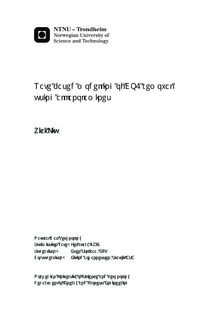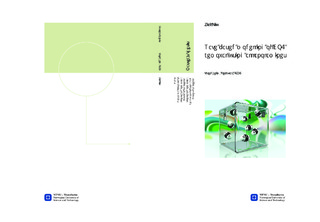| dc.description.abstract | CO2 is a major acid gas that is required to be removed from natural gas, in order to meet transportation specification. Chemical absorption using amine-based absorbents is a mature and well-known separation process applied on oil and gas industries. Due to the rate-controlled nature of reactive absorption process, classical steady-state equilibrium models are inadequate to describe the behavior and mechanical of chemical absorption processes. A more effective and accurate modelling approach is non-equilibrium model, which considers the thermodynamic driving forces across gas-liquid interface, and describes the actual rates of mass and heat transfer between gas and liquid phase. In this thesis, a rate-based model for CO2 chemical absorption by monoethanolamine (MEA) is developed. The rate-based model is presented based on two-film model that incorporates mass and heat transfer including CO2-MEA chemical reactions. The model is implemented in MATLAB, and required parameters are determined by literature data.This rate-based model consists of three parts: mass transfer model, temperature gradient estimation and heat transfer model. The first part of the model simulates the concentration profiles of CO2 and MEA in the liquid film. This mass transfer model shows very good agreement with analytical literature results and with numerical simulation model developed during semester project. In the second part of the model, the reaction heat and temperature gradient are estimated. Both of them decrease with distance from gas-liquid interface to liquid phase. This estimation model assumes that each grid in film segment is an adiabatic system. The maximum temperature gradient is approximately 6 K/s, and takes place at interface. Heat transfer model, the third part of the model, estimates the temperature profile in the liquid film during CO2 absorption by MEA. The temperature rise is due to physical absorption and exothermic chemical reaction. The temperature rise at interface simulated by heat transfer model is significantly lower than the rise-temperature simulated by temperature gradient model. This concludes that adiabatic assumption is not very realistic and heat conduction is necessarily considered in energy balance model. Furthermore, the heat transfer model shows that the temperature at interface is not raised significantly above the bulk temperature. Therefore, the effects of temperature rise on system physic-chemical properties, for instance to affect solubility, diffusivity and reaction rate, can be ignored.This thesis investigates the effects of operation temperature, CO2 loading and initial MEA mass weight on concentration profile, the distance of absorption equilibrium, temperature profile and temperature rise at the interface. The distance of absorption equilibrium preforms the opposite trend of temperature rise at interface. In conclusion, this work addresses the development of a rate-based model for CO2 absorption by MEA. The model predicted data is in accordance with published data. | nb_NO |

